Accepted Scientific Name: Mammillaria karwinskiana Mart.
Nova Acta Phys.-Med. Acad. Caes. Leop.-Carol. Nat. Cur. 16(1): 335, t. 22. 1832
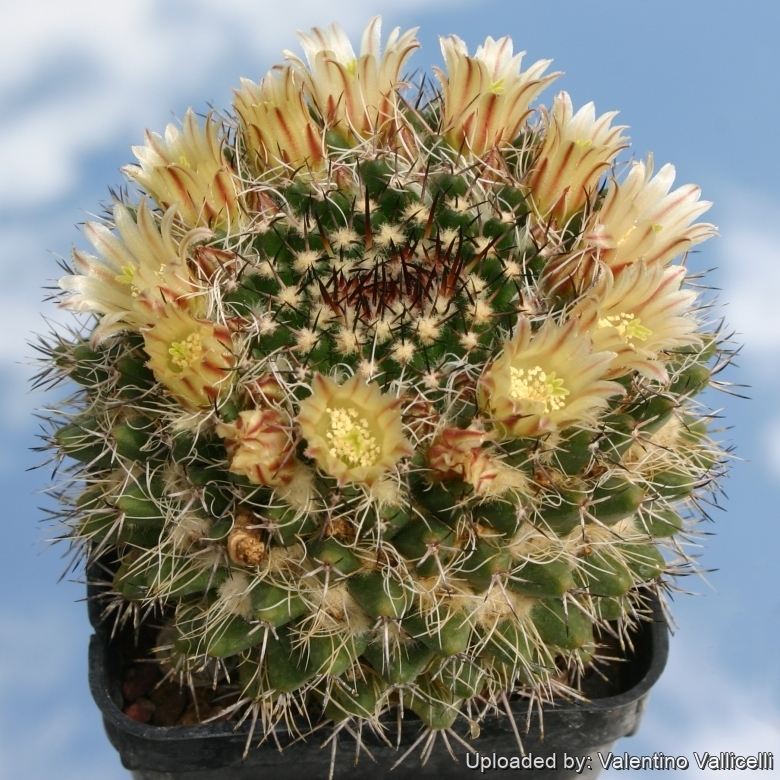
Cactus karwinskianus (Mammillaria karwinskiana) Photo by: Valentino Vallicelli
Origin and Habitat: Mammillaria karwinskianaSN|20736]]SN|20736]] has a very wide range in Guatemala and Mexico( Chiapas, Colima, Guerrero, Oaxaca, Morelos, Michoacán, and Puebla).
Altitude: 150 - 2100 metres above sea level.
Habitat: This species is common and abundant in tropical deciduous forest and xerophyllous scrub along with Ferocactus robustusSN|21488]]SN|21488]], Heliabravoa chendeSN|7732]]SN|7732]], Agave karwinskii, Agave lechuguillaSN|23013]]SN|23013]], Agave salmiana and Yucca periculosaSN|29988]]SN|29988]]. It is threatened by deforestation for small-holder agriculture and goat-ranching.
More...Synonyms:
See all synonyms of Mammillaria karwinskiana
Common Names include:
RUSSIAN (Русский): Маммиллярия Карвинского
SWEDISH (Svenska): Höstvårtkaktus
Description: Mammillaria karwinskianaSN|20736]]SN|20736]] is a solitary, or slowly branching dichotomously (or basally) cactus, with cream coloured 'snowy' tomentum on the top of the plant. Four subspecies are recognized, the nominate, ssp. beiselii (Diers) D.R Hunt, ssp. collinsii (Orcutt) D.R.Hunt and ssp. nejapensis (R.T.Craig & E.Y Dawson) D.R.Hunt.
Stem: Globose to short cylindrical, blue-green to dark green, up to 12 cm in diameter, 8-20 cm tall. With latex. The Axil is very woolly, with tufts of white hair and long white bristles.
Tubercles: Firm, pyramidal, arranged spirally with 13-21 parastichys.
Radial spines: Usually 6, awl-like, straight to slightly curved, cream to reddish tipped with brown, becoming chalky white with age, 4 - 30 mm long, upper and lower ones longest.
Central spines: Absent.
Flowers: Funnel-form, cream-white to yellow with purplish mid-veins, up to 25 mm long and 15 mm in diameter. Blooms adorn the crown of the plant, usually in a ring, in the growth of the previous year.
Flowering time: Early spring.
Fruits: Red, elongated, and quite attractive.
More...Subspecies, varieties, forms and cultivars of plants belonging to the Mammillaria karwinskiana group
Notes: This is one of the Mammillaria commonly called "Owl Eye Cactus", known for dichotomous branching (forking or dividing into two parts). Although dichotomous branching is not a common occurrence in cacti in general, it happens for some reason in this particular species. What is interesting about this cactus is that it began as a single head, one head became two, and so on. Other Owl Eye Cactus among others comprise Mammillaria crucigeraSN|15836]]SN|1835]], Mammillaria formosaSN|15832]]SN|15832]], Mammillaria microtheleSN|1835]]SN|15836]] and Mammillaria perbella.
Bibliography: Major references and further lectures
1) David Hunt, Nigel Taylor “The New Cactus Lexicon” DH Books, 2006
2) John Pilbeam (1999) “Mammillaria The Cactus File Handbook” Nuffield Press.
3) Nathaniel Lord Britton, Joseph Nelson Rose “Cactaceae: Descriptions and Illustrations of Plants of the Cactus Family” vol. 4 The Carnegie Institution of Washington, Washington 1923
4) Stuart Max Walters “The European Garden Flora: Dicotyledons (Part I)” Cambridge University Press, 1989
5) Edward F. Anderson “The Cactus Family” Timber Press, 2001
6) Hernández, H.M. & Gómez-Hinostrosa, C. 2013. Mammillaria karwinskiana. In: IUCN 2013. "IUCN Red List of Threatened Species." Version 2013.2. <www.iucnredlist.org>. Downloaded on 03 January 2014.
More...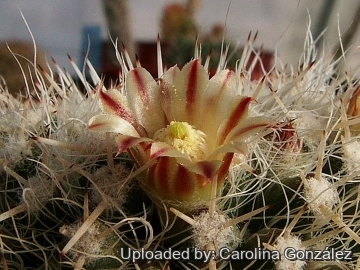 Cactus karwinskianus (Mammillaria karwinskiana) Photo by: Carolina González
Cactus karwinskianus (Mammillaria karwinskiana) Photo by: Carolina González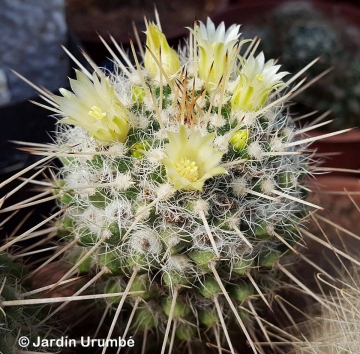 Cactus karwinskianus (Mammillaria karwinskiana) Photo by: Alexander Arzberger
Cactus karwinskianus (Mammillaria karwinskiana) Photo by: Alexander Arzberger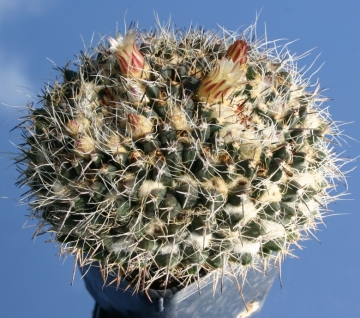 Cactus karwinskianus (Mammillaria karwinskiana) Photo by: Cactus Art
Cactus karwinskianus (Mammillaria karwinskiana) Photo by: Cactus Art Cactus karwinskianus (Mammillaria karwinskiana) Photo by: Cactus Art
Cactus karwinskianus (Mammillaria karwinskiana) Photo by: Cactus Art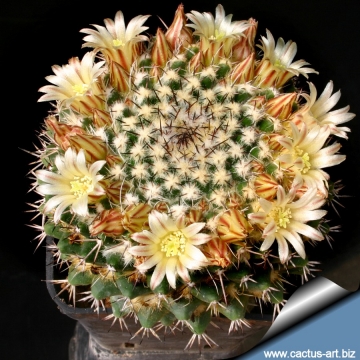 Cactus karwinskianus (Mammillaria karwinskiana) Photo by: Cactus Art
Cactus karwinskianus (Mammillaria karwinskiana) Photo by: Cactus Art Cactus karwinskianus (Mammillaria karwinskiana) Photo by: Alexander Arzberger
Cactus karwinskianus (Mammillaria karwinskiana) Photo by: Alexander Arzberger Cactus karwinskianus (Mammillaria karwinskiana) Photo by: Cactus Art
Cactus karwinskianus (Mammillaria karwinskiana) Photo by: Cactus ArtSend a photo of this plant.The gallery now contains thousands of pictures, however it is possible to do even more. We are, of course, seeking photos of species not yet shown in the gallery but not only that, we are also looking for better pictures than those already present.
Read More... Cultivation and Propagation: They are easy to cultivate, and make interesting specimens for any collection. Over time they will produce large clumps. It grows by dichotomously dividing, and also by producing offsets and doesn't require any special treatment, but needs as much light as possible without burning the plant, to keep the stems compact. It needs a well-drained soil mix. Water well and then allow to dry thoroughly before watering again, during the growing season. It doesn't like much, if any, winter water, and can survive short exposures to freezing temperatures (-4° C.) if properly hardened off and kept dry.
Propagation: Mammillaria karwinskianaSN|20736]]SN|20736]] is best propagated from seed. Seed readily germinates at 20°-22°C, or by offsets if available.

















